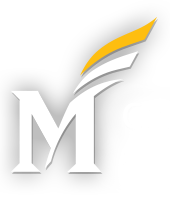George Mason University’s Design Standards Manual outlines requirements for the construction of new laboratory facilities and renovation of existing laboratories. EHS participates in the planning and design phases of laboratory construction and renovation projects to ensure the laboratory facilities are designed to meet equipment needs, optimize workflow, comply with safety standards and provide maximum flexibility with respect to the breadth and scope of activities the laboratory space can accommodate.
| Collapse All
Laboratory Design Requirements
- Building
- Buildings that contain laboratories, art studios, or maintenance buildings where chemicals are used shall have a designated room for chemical storage and waste storage.
- A sufficient number of lunchrooms and breakrooms must be provided to discourage eating and drinking in, and continuous occupancy of, potentially hazardous work areas.
- Lunchrooms, break rooms, and rest rooms must be separate from laboratory areas. All biological laboratories shall be provided access to a cold room within the same building as the laboratory.
- Ventilation
- Laboratory ventilation systems must be single-pass systems that support a negative pressure environment with respect to adjacent hallways and rooms, unless a positive pressure system is specifically required.
- Air exchange rate must be between 6 and 12 air changes per hour, depending on laboratory activities.
- Building air intake and exhaust vents must be situated to prevent recirculation of laboratory exhaust.
- Fire Safety
- All laboratories should meet the requirements of NFPA-45 Standard on Fire Protection for Laboratories Using Chemicals.
- Lighting
- Laboratories should be equipped with adequate glare-free lighting. For typical laboratory work, National Institutes of Health (NIH) recommends 75-120 foot-candles of illumination. Specific laboratory activities may require unique lighting strategies such as explosion-proof lighting or infrared lighting to prevent potential fires and to protect the work being conducted.
- Each laboratory and laboratory support room should be equipped with emergency lighting.
- Floors
- Laboratory floors must be designed to support large pieces of laboratory equipment (i.e., mass spectrophotometers, freezers, etc.). In addition, vibration and stabilization may need to be considered for certain pieces of equipment (i.e., electron microscopes, etc.).
- All labs shall have hard floors, preferably chemical resistant (VCT and sheet vinyl are typically acceptable).
- Workstations
- Laboratory bench tops must be constructed of synthetic materials resistant to the effects of acids, bases, solvents and moderate heat.
- Bench tops must be capable of supporting the weight of equipment and should be resistant to chipping or damage from routine laboratory operations. Sufficient space must be provided for research activities and equipment placement.
- For all instructional laboratories, provide sufficient space beneath the bench top to accommodate a person’s legs and allow them to sit comfortably and erect while working at the bench top.
- Sinks
- All laboratories are required to have a fully functional sink with a drain and pressurized water. Sink drains should be made of nonporous material and easily disinfected. Hands-free sinks may be required in certain types of laboratories. Sinks should be located near exits leading to less hazardous areas.
- Engineering Controls
- The most hazardous operations areas, such as chemical fume hoods, biological safety cabinets, and chemical storage areas must be located away from doors and exits in an area that is least susceptible to cross drafts, foot traffic, or sources of exhaust from other laboratory equipment. This is to improve safety and to minimize the chance that turbulence is created near the hood or cabinet.
- Chemical fume hoods are required in all laboratories where chemicals will be used or stored.
- Biosafety cabinets are required in all laboratories where biohazardous material will be used.
- Laboratory doors should be self-closing and self-locking.
- Special Equipment
- Specific design requirements for microscope rooms depend on the type of microscope and the work to be performed. Vibration, ventilation, lighting, and utilities are important considerations.
- Telephone
- Laboratories and laboratory support rooms must have access to a telephone that can be used to dial 911 during or after routine work hours.
- Animal Spaces
- Laboratories that will house animals must be designed to meet AAALAC standards.
- Penetrations – Penetration in floors, walls, and ceilings should be sealed, to include openings around ducts, doors, and door frames, to facilitate pest control and proper cleaning.
What to Consider When Designing or Renovating a Laboratory
It can be challenging to identify all design considerations upfront, but the degree to which the needs and requirements for the laboratory can be anticipated and incorporated early in the design phase will significantly impact the course of the design process and can prevent the need for costly changes during and after construction. Principal Investigators and Departments are encouraged to reach out to EHS as soon as they can, to ensure the proposed laboratory meets safety can compliance requirements. Following is a list of factors to consider when planning a new laboratory construction or renovation project.
- Will the laboratory be used for research or instruction?
- What is the anticipated occupancy during peak use?
- What types of hazardous substances will be used and in what quantities? Are there special requirements for storage and use of these substances?
- What equipment and instruments will be housed?
- Are there special requirements for placement, structural support, ventilation, electricity, back-up systems, environmental controls, etc?
- What procedures and manipulations will be conducted?
- Are standard engineering controls sufficient?
- Will complex apparatus be used?
- Will novel substances or uncharacterized material be used or synthesized?
- What type of wastes will be generated and in what quantity?
- Are there regulatory or funding requirements that must be considered for such as need for an anteroom or intrusion detection system?

